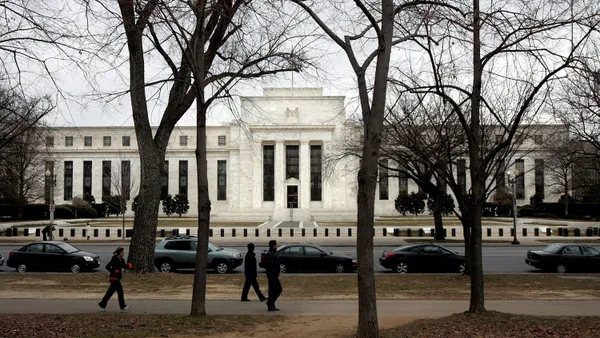Dive Brief:
- The Federal Reserve should either raise the baseline level for its countercyclical capital buffer or increase the minimum capital it requires banks to hold after an annual stress test, the Fed's vice chair of supervision, Randal Quarles, said during a conference in Germany last week.
- Either of those tools could be used in place of two mechanisms the Fed proposed in April 2018: a stress leverage buffer and a requirement that banks prepay for a year’s worth of planned dividends, Quarles said.
- Quarles said he hopes to integrate the changes into the next round of stress tests, set for June 2020.
Dive Insight:
The Fed has been easing its stress tests, both in transparency and in the number of categories under which big banks are measured.
All told, each bank's day-to-day capital cushion will include long-standing base amounts, the new "stress capital buffer" based on the results of the annual test of how well the bank can endure a crisis, a countercyclical buffer and an existing surcharge based on how systemically important and complex the bank is, according to Bloomberg.
Under the April 2018 proposal, a lender's hypothetical losses from the stress tests could be used as a buffer in addition to its day-to-day capital minimum. That would add to the capital requirements for the nation's largest banks. The new calculation could reduce the capital cushions for smaller banks by tens of billions of dollars, according to Bloomberg.
The countercyclical capital buffer directs banks to hold more capital during boom times to protect against losses when risk is high. The Fed has its buffer set at zero percent and has never used it. Quarles said the U.S. has calibrated its buffer to double the level agreed to internationally, so in effect, it's always on. He argued Thursday that a higher baseline would give the Fed more flexibility to adjust bank capital levels across the economic cycle.
Quarles said the Fed will seek public comment on any revisions to the original proposal.












